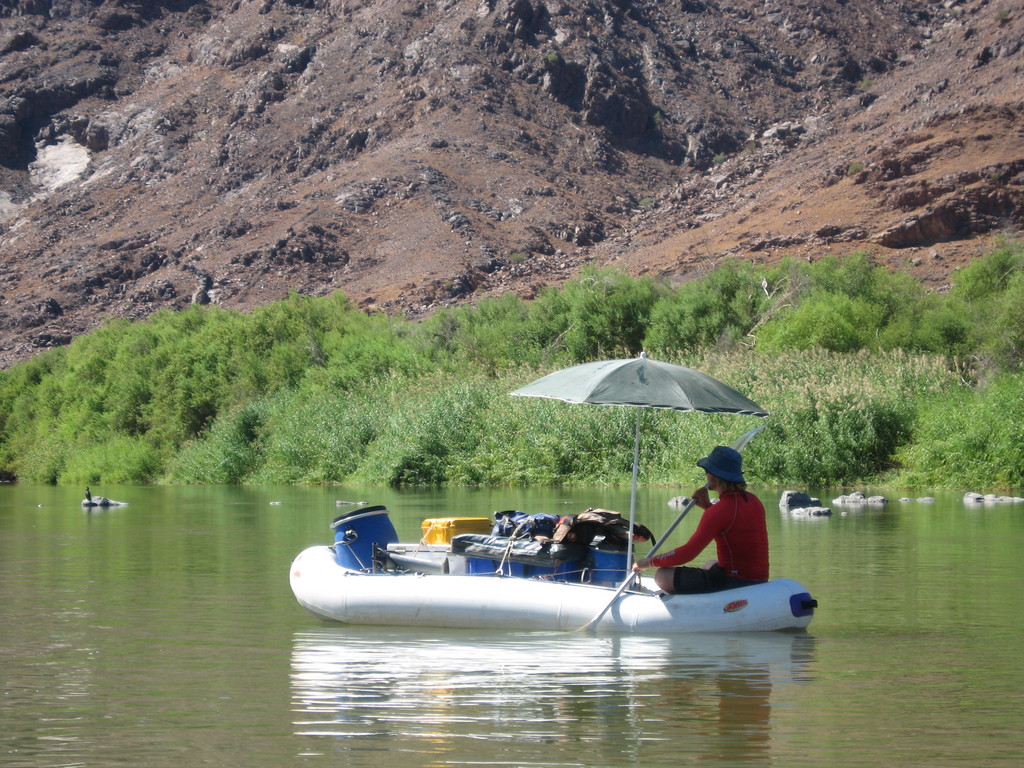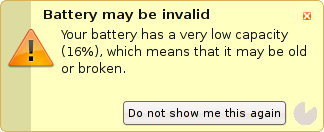I've just got back from a week away, rafting down the Orange river. (Yes it was term time at UCT, I bunked classes :-) )
We went with Gravity, on the recommendation of my sister, who is an ex-guide. If you want to not be going with strangers, you need numbers, so we got a group of friends together, and my brother came down from London especially for it.
It isn't the cheapest way to spend a week (1200kms of petrol and ZAR 2k for the trip), but it was well worth it. Gravity specialise in the Orange river Gorge, and don't have a permanent base on the Richtersveld section of the river, which we requested to do. But they hired a local camp site, and brought the equipment down for us. Our guide, Ant, was very experienced, a good river-cook, and generally good fun. He even persuaded a friend of his, who was about to go home on leave, to come down with us, as a hard-working assistant, "on holiday". The food they produced for us was, while made from simple ingredients, phenomenal. There was always too much, and we had a cooler-box per day for us to bring our own cold beer (and other drinks). The ice just lasted to keep everything cold for 4 days.
The scenery in the Richtersveld is spectacular. The river is a strip of incredibly fertile land, down the middle of a barren desert. You are surrounded by a mountain range of loose, rocky mountains, brimming with Quartz seams. While it feels like the middle of nowhere, there are goats, fisherman, and mining activity around, which is a pity -- when I've been there in the past, it was far more barren. Fortunately, there was no (South African) cell phone reception, and my laptop stayed at home. :-)
I took quite a few photographs (in-between rapids, when my camera had to be packed away in a waterproof container). I didn't expect it's battery to last for the whole trip, but it did, which was great as I don't have a spare :-). Taking panoramas seems to be all the rage these days, so I took quite a few, but I haven't managed to stitch them together yet...
The river is of course the border between South Africa and Namibia, so on our way, we had to go through the border, get stamped into Namibia, then come back (without getting stamped), and go to our base camp on the South African side (while officially being in Nambia). Then, at the end of the trip, we got picked up from the Namibian side and driven back through the border (getting stamped this time). Fortunately, once you get away from the border post and onto the river, no one cares about borders any more :-)
The day is phenomenally hot (even in this calm time of the year), and so you constantly jump into the water for a swim. Or find someone who you can splash, so that you can start a water fight, and end up soaked :-)
There was quite a bit of paddling to do every day (as the water was low), but it was quite relaxing, and not very stressful. We even had a tail wind one day, and could put up kekoi sails. All in all, we covered 75km in 4 days.
The nights weren't too cold (thank god, because I forgot my sleeping bag, and had to borrow a rather thin one from the Felix Unite camp), but clear and dew & mosquito-free. It was new moon, and the stars every night were spectacularly bright and plentiful -- I wish I'd taken a star-map with me.
All in all, I highly recommend that everyone do this trip. Gravity are great, and our guide, Ant, is worth requesting :-)








